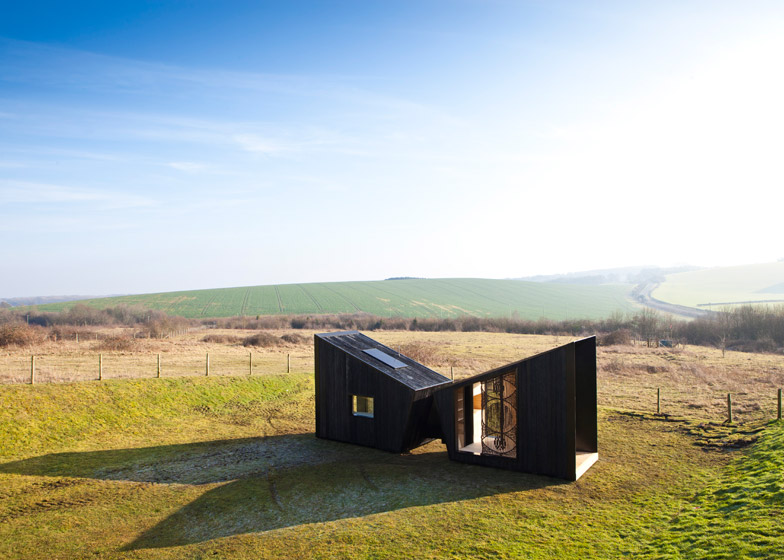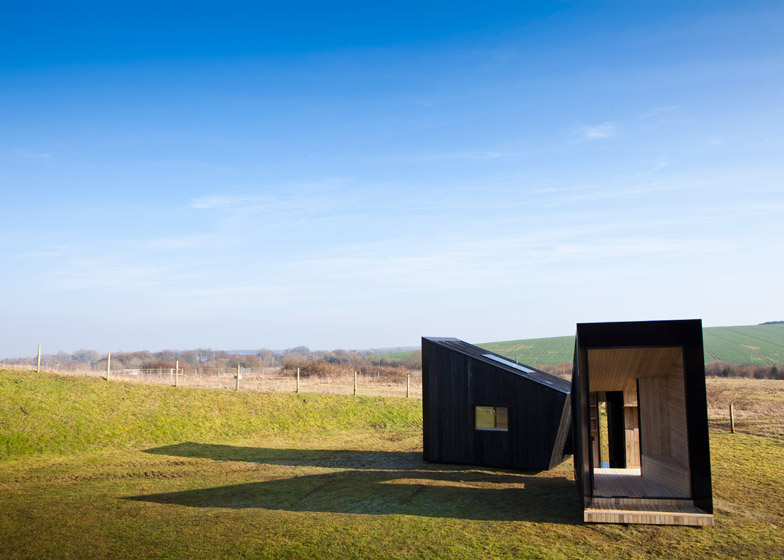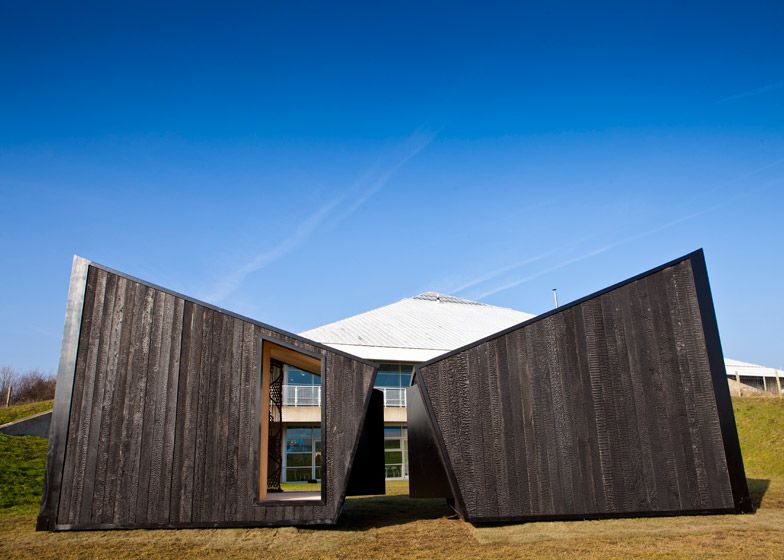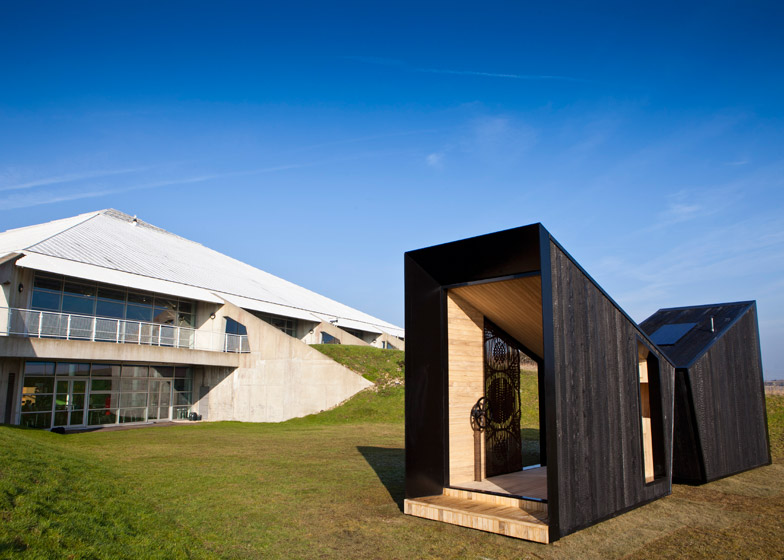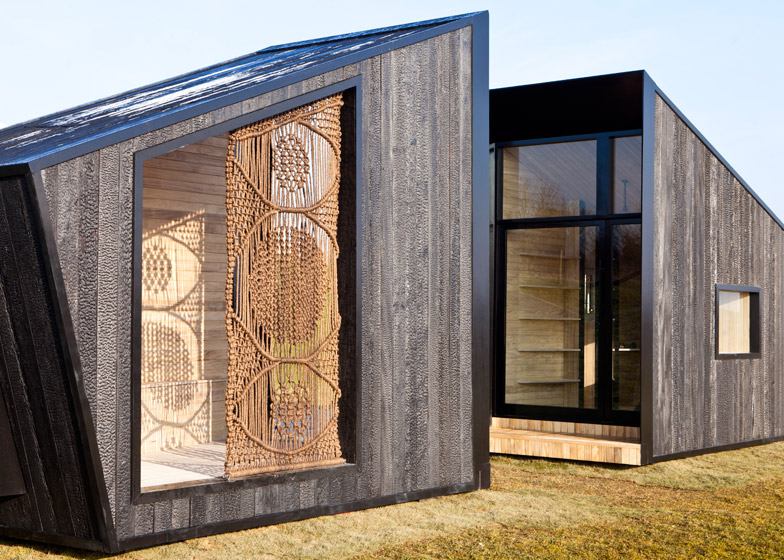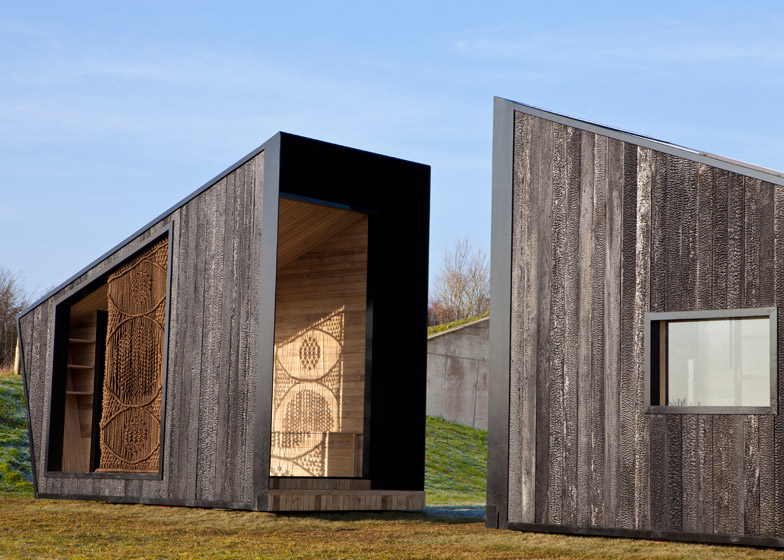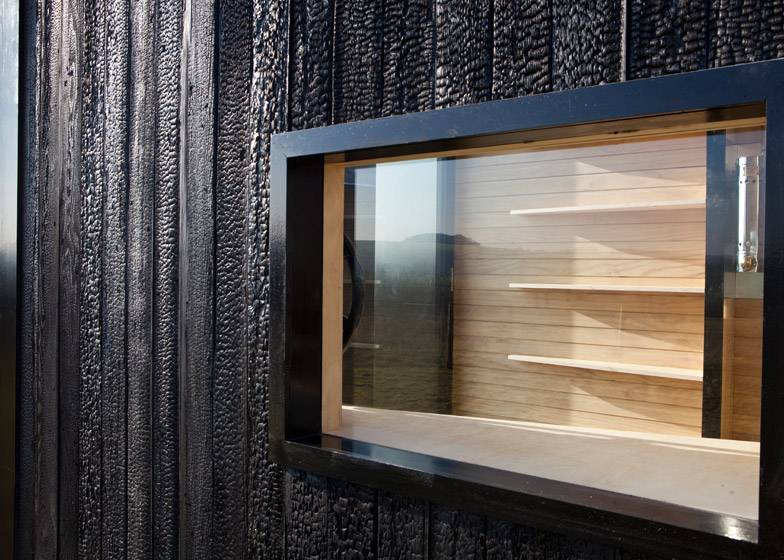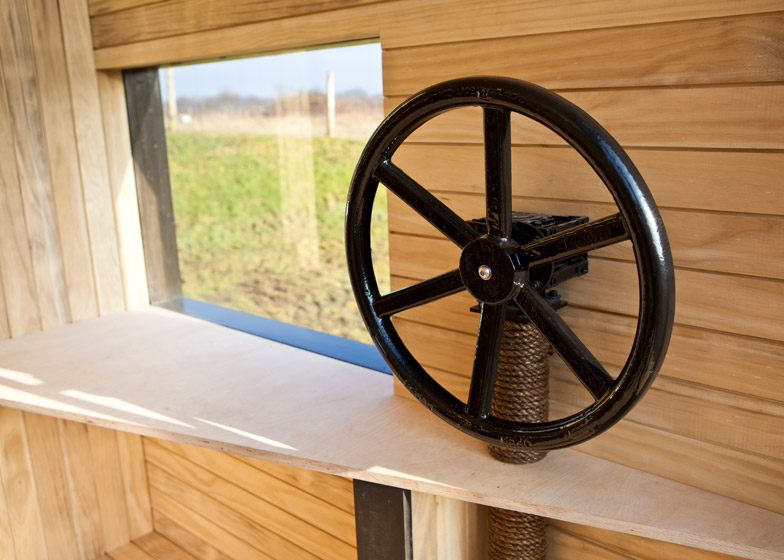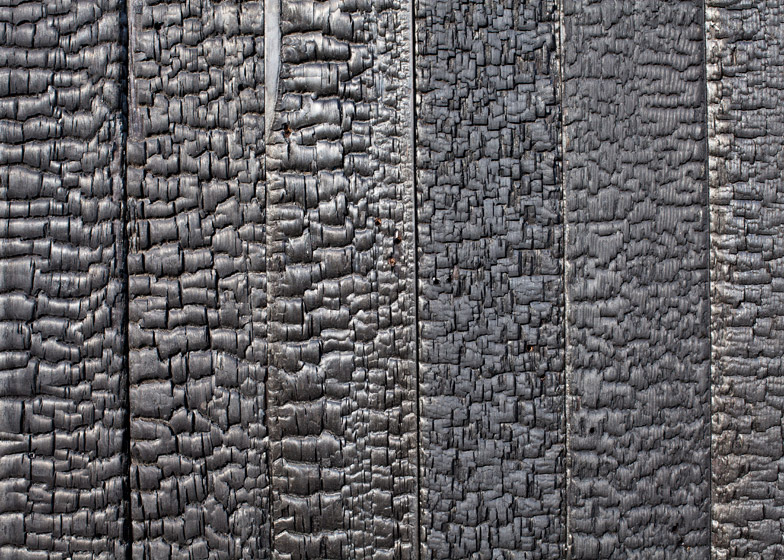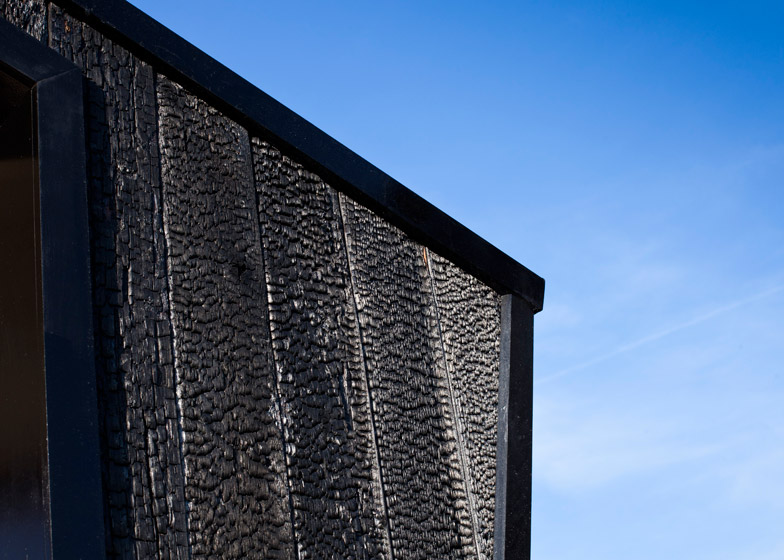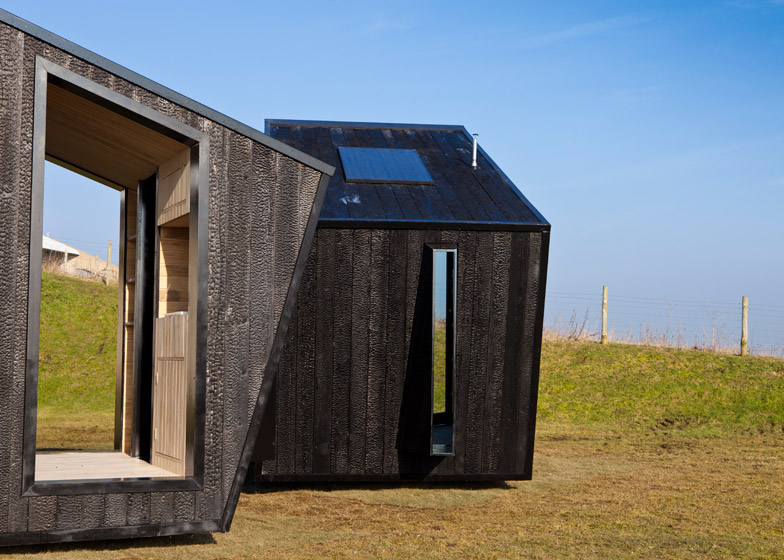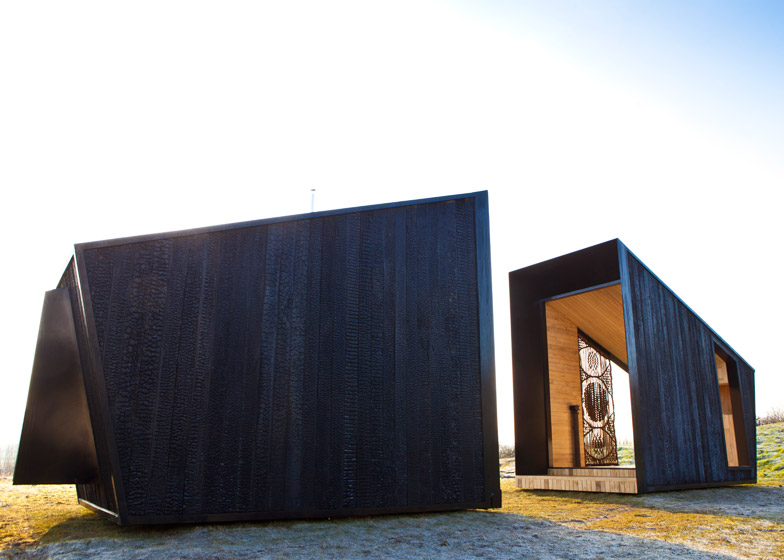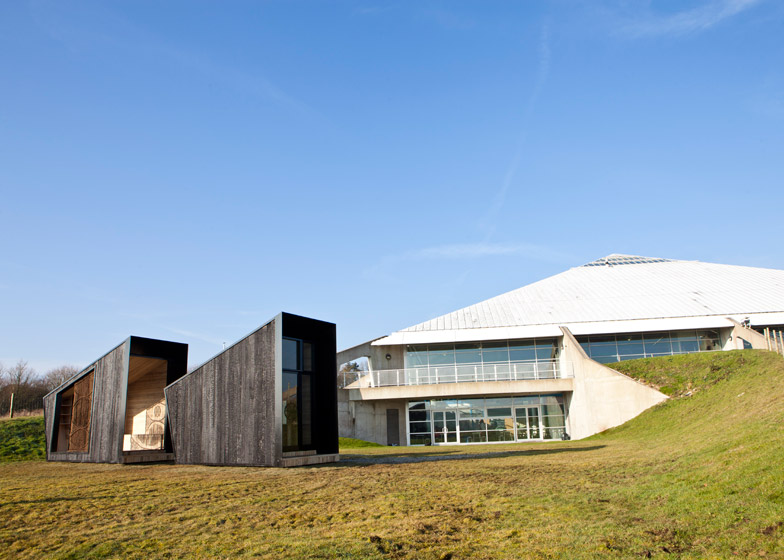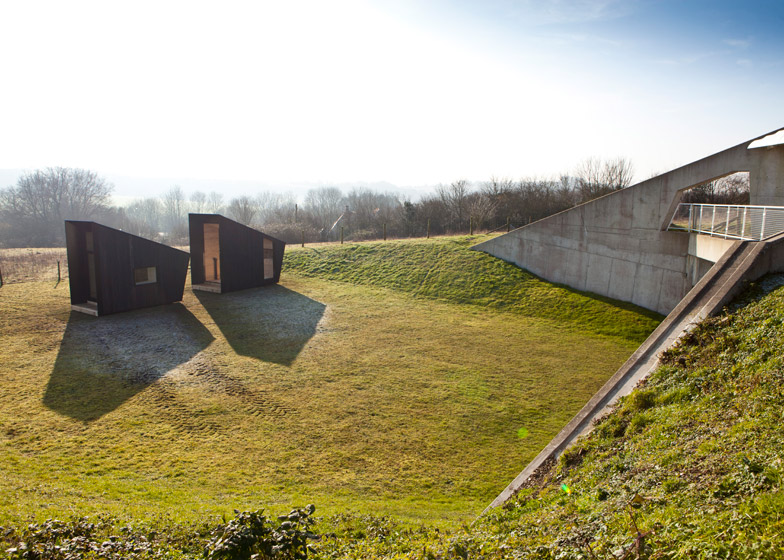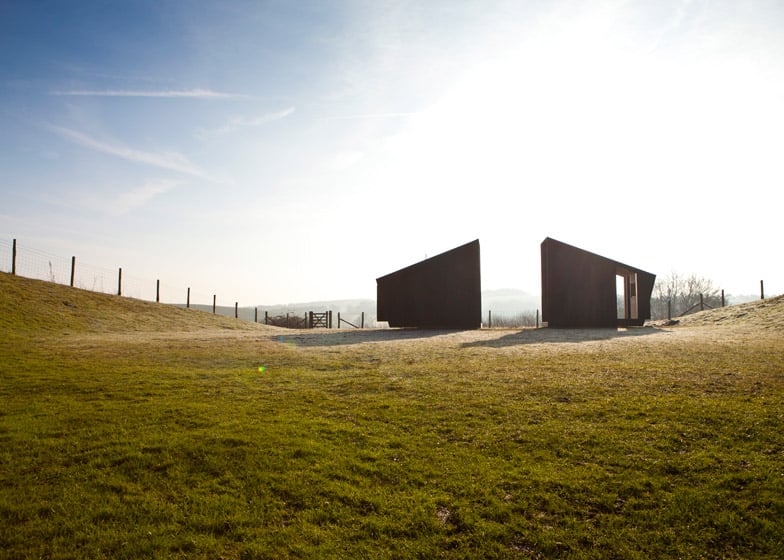These two charred-timber cabins house a temporary artist's studio that will travel across the UK, offering passers-by a glimpse into the working processes of the occupants (+ slideshow).
Designed by a team of young designers from London firm Feilden Clegg Bradley Studios, the two cabins were commissioned as part of an arts education programme and are collectively called The Observatory.
Each one also has its own name – the Study and the Workshop – to reflect different uses, and both have wheels built in to their bases to allow them to pivot towards the best views at their location.
They were created to encourage interaction between artist and audience, making private acts of the design process public through the large windows.
Six artists, ranging from traditional sculptors to scriptwriters, will take up two-month-long residencies in the structures over the duration of 2015.
The cabins are fixed to two steel bases with caster wheels that allow the structures to rotate. This system is manually operated by a crank handle – one 360-degree rotation takes approximately six minutes to complete.
Inside, pale timber clads the simple spaces. The more private Study cabin has a desk, stove and the potential to facilitate a portable toilet and sleeping space, while the Workshop provides an installation space for public viewing.
The studio was designed by four architectural assistants from Feilden Clegg Bradley Studios – Lauren Shevills, Mina Gospavic, Ross Galtress and Charlotte Knight – in collaboration with Devon-based artist Edward Crumpton.
The team won a commission to design the structures for SPUD (Space, Place-making and Urban Design), an arts education consultancy based in the New Forest.
The structures "offer the opportunity for artists and audiences to engage in new places outside conventional galleries in unique landscapes – a look in, a look out," explained architect Charlotte Knight.
According to Knight, the shapes of the structures were influenced by the geometric works of American artist Sol LeWitt and Antonello da Messina's painting St Jerome in His Study.
"The viewer is invited into the framed space of the artist, where the landscape is framed beyond," she added.
Both buildings have a timber frame and are clad in lengths of charred wood, a material choice the architects said was inspired by the charcoal design drawings created by artist Edward Crumpton.
A woven tarred-rope screen created by the artist wraps around fixtures in the cabin, and is designed to weather and decay over the duration of the project.
Rainwater is harvested to supply a reclaimed ceramic sink, and solar panels provide enough electricity to power a light bulb and a laptop.
The Observatory will spend the first six months of 2015 outside the Winchester Planetarium in the South Downs National Park where artists Simon Ryder, Sean Harris and Isabella Martin will each take up a residency.
In July, the cabins will be transported on the back of a single flatbed lorry to Lymington Salt Marshes where resident artists will be Katie Surridge, Jilly Morris and Alice Angus.
A programme of school and community workshops and talks curated by SPUD will run in conjunction with the residencies.
"Art is something that shouldn't be tucked away and hidden and we are hopeful that The Observatory will stimulate both young and old minds to visit more exhibitions and performances and to be inspired by the world around us," said principal associate at SPUD, Phil Smith.
For job opportunities at Feilden Clegg Bradley Studios, visit their company profile on Dezeen Jobs.
Photography is by Matt Dunkinson.




